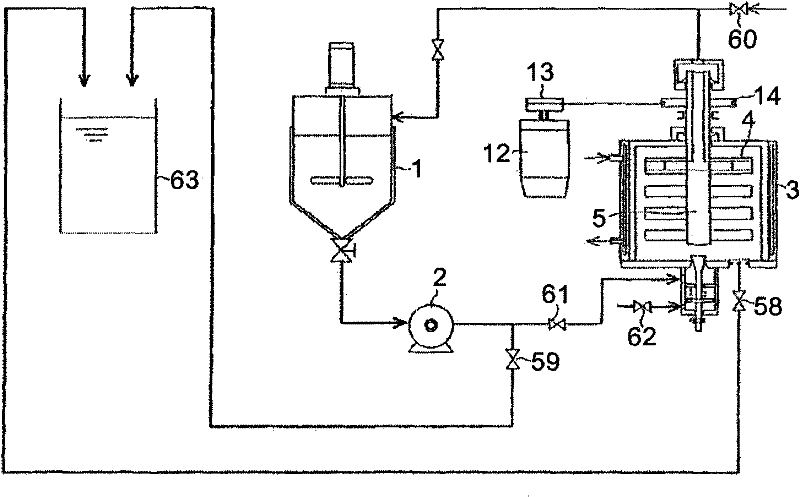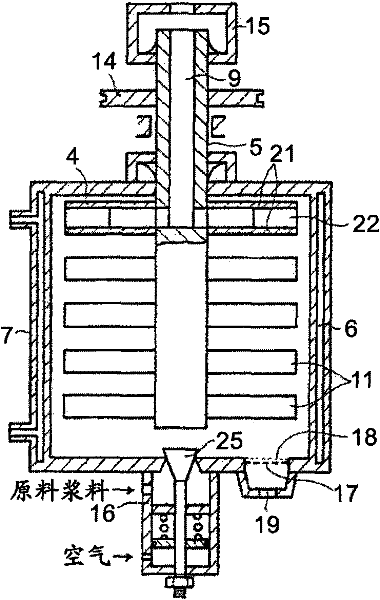Inorganic particle dispersoid, energy ray-curable resin composition and film
A technology of inorganic particles and dispersions, applied in the field of dispersions, which can solve the problems of insufficient dispersion stability and no clear hardness of the cured product.
- Summary
- Abstract
- Description
- Claims
- Application Information
AI Technical Summary
Problems solved by technology
Method used
Image
Examples
manufacture example 1
[0249] In a reaction device equipped with a stirring device, a cooling tube, a dropping funnel, and a nitrogen gas introduction pipe, add 250 g of glycidyl methacrylate (hereinafter referred to as GMA), and 1000 g of methyl isobutyl ketone (hereinafter referred to as MIBK) and 10 g of tert-butylperoxyethylhexanoate (hereinafter referred to as P-O), the temperature in the system was raised to about 90° C. for about 1 hour under a nitrogen flow, and kept for 1 hour. Next, from the dropping funnel previously charged with the mixed solution of 750 g of GMA and 30 g of P-O, the mixed solution was added dropwise to the system for about 2 hours under nitrogen flow, and kept at the same temperature for 3 hours. Then, the temperature was raised to 120° C., and the temperature was maintained for 2 hours. After cooling to 60°C, replace the nitrogen inlet tube with an air inlet tube, add 507g of acrylic acid (hereinafter referred to as AA), 2.3g of p-methoxyphenol (Metokinon) and 9.3g of ...
manufacture example 2
[0251] Using the same reaction apparatus as in Production Example 1, after adding 125g of GMA, 125g of methyl methacrylate (hereinafter referred to as MMA), 1000g of MIBK and 10g of P-O, the temperature in the system was raised to about 1 hour under nitrogen flow. 90°C, keep warm for 1 hour. Next, from the dropping funnel previously added the mixed solution formed by 375gGMA, 375g MMA, and 30g P-O, the mixed solution was added dropwise to the system under nitrogen flow for about 2 hours, and kept at the same temperature for 3 hours. Then, the temperature was raised to 120° C., and the temperature was maintained for 2 hours. After cooling to 60°C, the nitrogen inlet pipe was replaced with an air inlet pipe, 254g of AA, 2.3g of p-methoxyphenol, and 9.3g of triphenylphosphine were added and mixed, and the temperature was raised to 110°C with air blowing. After retaining at the same temperature for 8 hours, 1.6 g of p-methoxyphenol was added and cooled, and MIBK was added to make...
manufacture example 3
[0253] Using the same reaction device as in Production Example 1, after adding 75g GMA, 175g MMA, 1000g MIBK, and 8g P-O, the temperature in the system was raised to about 90° C. under nitrogen flow for about 1 hour, and kept for 1 hour. Then, from the dropping funnel previously added the mixed solution formed by 300g GMA, 700g MMA, and 23g P-O, the mixed solution was added dropwise to the system in about 2 hours under nitrogen flow, and kept at the same temperature for 3 hours. Then, the temperature was raised to 120° C., and the temperature was maintained for 2 hours. After cooling to 60°C, the nitrogen inlet pipe was replaced with an air inlet pipe, 152g of AA, 2.3g of p-methoxyphenol, and 5.6g of triphenylphosphine were added and mixed, and the temperature was raised to 110°C under air blowing. After maintaining at the same temperature for 8 hours, 1.6 g of p-methoxyphenol was added, cooled, MIBK was added so that the non-volatile content would be 50%, and a solution of a ...
PUM
 Login to View More
Login to View More Abstract
Description
Claims
Application Information
 Login to View More
Login to View More - R&D
- Intellectual Property
- Life Sciences
- Materials
- Tech Scout
- Unparalleled Data Quality
- Higher Quality Content
- 60% Fewer Hallucinations
Browse by: Latest US Patents, China's latest patents, Technical Efficacy Thesaurus, Application Domain, Technology Topic, Popular Technical Reports.
© 2025 PatSnap. All rights reserved.Legal|Privacy policy|Modern Slavery Act Transparency Statement|Sitemap|About US| Contact US: help@patsnap.com



